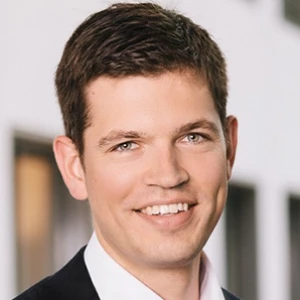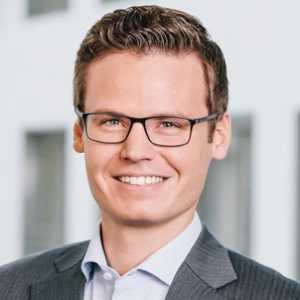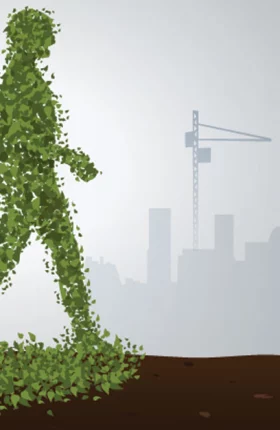BCG partnered with a fast-growing builder of prefabricated homes to help the company set ambitious yet realistic ESG targets—and action plans for achieving them.
It’s no surprise that the building industry is one of the largest emitters of greenhouse gases (GHG). Still, the actual numbers are eye opening: according to the World Green Building Council, the building sector accounts for 36% of global energy consumption, 38% of energy-related carbon emissions, and half of all resource consumption.
With such a large carbon footprint, the building industry bears an outsize responsibility for limiting climate change. In Germany, for example, BCG has calculated that the industry will need to reduce its GHG emissions by 46% by 2030 in order for the country to stay on the path to reaching net zero by 2045.
Prefabricated (prefab) modular homes can play a crucial role in reducing the environmental impact of the construction industry. According to government research by the German environmental ministry, building prefab homes generates up to 37% less CO2 than the construction of comparable site-built homes. Similarly, BCG research concluded that offsite prefab construction generated just half the construction waste of site-built homes.
Prefab modular homes can play a crucial role in reducing the environmental impact of the construction industry.
Indeed, some players in the prefab building sector are already emphasizing
sustainability
. Oikos, a leading provider of direct-to-consumer prefab modular family homes in Europe, is one such example. With about 1,800 employees and operations in Germany, Austria, Switzerland, and the UK, Oikos has been thriving in recent years, having nearly doubled its revenue from approximately €220 million in 2015 to more than €400 million in 2020, while significantly growing its market share in the same time frame. The company also has established a track record of acting sustainably across its
procurement
function, having purchased 100% certified green energy since 2018—which has enabled Oikos to achieve net-zero status for its Scope 2
Yet Oikos felt it was missing an opportunity to establish a stronger reputation as a sustainability leader in an industry where most other players had not yet set clear benchmarks or established KPIs for environmental, social, and governance (ESG) issues. With that in mind, Oikos partnered with BCG to better coordinate the company‘s existing ESG activities and develop a comprehensive strategy that would enable Oikos to take its sustainability performance to the next level.
Laying a Foundation for Sustainability
Organizations in many industries and sectors share Oikos’s concerns about sustainability. They worry their ESG efforts are scattershot or duplicative, and they fret about wasting energy on relatively unimportant ESG metrics while neglecting other ESG issues that are vital to customers, employees, regulators, or other stakeholders. Though they might already be doing an excellent job on individual ESG initiatives, these companies are not quite sure how to organize these disparate activities into a coherent and compelling ESG story and strategy.
To address these concerns, BCG and Oikos first initiated a three-step process to assess the company’s current standing in terms of sustainability issues, how Oikos compared to its peers in the building industry, and what ESG topics were most important to the company.
Define the Base. BCG began by helping Oikos define its baseline performance and identify areas where the company excelled in each category of the ESG framework.
- Environmental. The building industry as a whole has begun emphasizing green solutions, with particular emphasis on combining insulation and modern heating pumps to make buildings more energy efficient. But even relative to its peers in the German housing market, Oikos stands out. Not only did the company itself move to 100% green energy, but its sales mix is heavily geared toward highly energy-efficient homes. In fact, the company’s entire portfolio of prefab wooden homes had been validated as being sustainable by DGNB, the German Sustainable Building Council. As a prefab housing manufacturer, Oikos also has certain built-in advantages: it assembles the components of its homes in factories, which has allowed the company to develop a production process that is much more energy efficient and produces far less waste than a typical site-built home. And while some other prefab manufacturers rely on precast concrete panels that have a high carbon footprint, Oikos builds its homes from wood, a durable and renewable resource that captures CO2. In addition, the factory environment gives Oikos a chance to recover and incorporate more recycled material into the homes it builds.
- Social. Among employers in its region, Oikos was known for having an inclusive working environment; in fact, the company had dedicated managerial staff focused on equal opportunity and inclusion. In addition, Oikos had created an internship specifically for students with disabilities, and had gone on to hire several full-time employees with disabilities in warehouse roles.
- Governance. Oikos had clearly defined company guidelines across it brands, including a zero-tolerance policy for unethical behavior. The company also had made a commitment to obtain 100% of the wood that it uses as a building material from sources certified by FSC/PEFC (Forest Stewardship Council / Programme for the Endorsement of Forest Certification).
Identify Benchmarks. After documenting baseline ESG performance, the next step was to benchmark that performance against key competitors and industry peers. This benchmarking exercise enabled BCG to help Oikos identify its relative strengths and where the company had room for further development.
For instance, benchmarking showed that Oikos was ahead of its peer group in terms of its commitment to purchase 100% green energy and thus eliminate its Scope 2 emissions. On the other hand, the exercise also revealed that some of Oikos’s competitors had gone further in electrifying their fleet of production vehicles. Similarly, while Oikos had performed better than its peers in terms of employee retention, benchmarking revealed that the company was falling short in its employee training efforts.
Establish Materiality. For the third step, BCG and Oikos conducted a comprehensive materiality assessment that leveraged frameworks from the Global Reporting Initiative and the Sustainable Accounting Standards Board. We also conducted interviews and surveys with approximately 60 internal and external stakeholders, including managers across all key functions at Oikos, sales representatives, and contractors.
This materiality assessment process identified twelve ESG topics that were most important to stakeholders and also significant for business success. In BCG’s experience, however, companies often get the best results from ESG when they focus on a high-priority list of four to six initiatives; organizations that attempt to tackle every tempting ESG target risk getting distracted and being pulled in too many directions at once. To avoid this pitfall, BCG helped Oikos choose five topics as core components of the company’s near-term ESG strategy:
- Carbon Footprint of Production and Products. Oikos’s corporate culture is all about minimizing the company’s impact on the environment. As such, the company decided that its most important ESG goal would be to minimize the CO2 footprint of its production processes and product lifecycle. Even though Oikos had already eliminated its Scope 2 footprint, the company recognized it could do more to reduce its Scope 1 emissions by transitioning away from diesel-powered forklifts and oil-based heating systems. Oikos further demonstrated its commitment to sustainability by becoming one of the first companies in the building industry to explicitly spell out reduction targets for Scope 3 emissions. BCG’s analysis found that Oikos has already taken steps in this direction and reduced its carbon footprint by shifting its sales mix toward low-energy houses equipped with the most effective insulation materials and highly efficient heat pumps.
- Waste Reduction and Recycling. Oikos had taken steps to minimize waste generated through its production process, using software solutions to minimize wood scrap from its production line. The company saw the potential to shrink its waste stream even further by ramping up recycling efforts—turning production waste into wood pellets and particle board, using wood waste rather than oil to heat one of its factories, and driving collaboration with suppliers to establish a recycling loop for gypsum production waste.
- Client Satisfaction. As the impacts of climate change become more obvious, homeowner preferences are likely to shift toward sustainable, healthy, and low-impact homes. Oikos knew that understanding these changing preferences and meeting customers' evolving needs would be vital not just to its sustainability performance, but also to its overall business success.
- Employee Recruiting, Development, and Retention. Oikos has a longstanding commitment to employee satisfaction. Indeed, the peer benchmarking we conducted at the start of the engagement showed that Oikos ranked near the top in this category, performing better than some much larger competitors. By taking actions on ESG, Oikos could make itself even more appealing to existing and prospective employees. Being known as an ESG leader also can help companies compete for talent, especially among younger generations who say they care deeply about the ESG practices and commitments of their employers.
- Corporate Ethics. In recent years, there have been some controversies involving unethical practices in the construction sector, so companies such as Oikos face pressures to demonstrate their commitment to ethical corporate behavior. Oikos already had clearly defined guidelines that expressed zero tolerance for unethical activities. Recently, Oikos initiated a “Compliance Uplift” program to further upgrade its compliance systems. BCG helped Oikos to define flagship initiatives within this program, including a group-wide code of conduct and the introduction of a whistleblower platform. Oikos will conduct training sessions on its upgraded compliance system to make sure that employees truly understand and embrace the concept of behaving ethically in all aspects of their jobs.
Developing a Winning ESG Strategy
Once organizations have identified their top ESG priorities, the next question is how to improve performance in those focus areas. Companies need to consider which approaches will yield the greatest improvement on sustainability metrics while also being aligned with business objectives. (That being said, there may be individual ESG initiatives where a company incurs some additional costs—such as higher energy prices on a renewable energy purchase—in order to reap the greater long-term benefit from being known as a ESG leader.)
In this case, BCG and Oikos identified seven ambitious yet realistic near-term ESG targets and action plans to help the company achieve them. (See Exhibit 1.)
Environmental. Oikos aimed to lead the industry by reducing combined Scope 1 and Scope 2 emissions per delivered house by 3% per year. By 2025, Oikos aims to reduce those emissions by 15% as compared to its 2020 footprint. (See Exhibit 2.)
For many companies, switching to renewable energy sources and zeroing out Scope 2 emissions could go a long way toward shrinking their carbon footprint. But Oikos had already pulled that lever in 2018, so the company would have to find other ways to lower its direct (Scope 1) emissions.
To help Oikos do that, BCG conducted a deep dive into the company’s baseline emissions figures to identify the main sources of direct emissions. We then proposed alternative, technically feasible options that had both lower carbon intensity and a positive business case. We used this information to help the Oikos management team pick those levers that offered the most impactful balance between CO2 reductions and financial benefits. Ultimately, Oikos decided to proceed with further electrifying its production fleet and upgrading its current heating systems to more efficient models.
Now Oikos aims to go further and reduce the carbon footprint associated with the entire lifecycle of the homes the company produces and sells. Scope 1 and Scope 2 emission reductions are challenging enough on their own, but Scope 3 emissions represent a step change in complexity—after all, organizations cannot control the sources of Scope 3 emissions directly but can only hope to influence how people use their products. To shrink those Scope 3 emissions, Oikos is doubling down on ecofriendly housing features and options in line with evolving customer preferences and regulatory developments. For instance, Oikos plans to encourage customers to install photovoltaic systems and batteries for energy storage. The company also aims to partner with energy suppliers to offer its homebuyers the option to get all their electricity from renewable sources. In this way, Oikos aims to reduce CO2 emissions from energy consumption along the lifecycle of its houses by 10% overall.
Social and Governance. While environmental concerns are paramount to a homebuilder, any comprehensive ESG strategy also has to include social and governance dimensions. These fields often are more challenging to quantify, since most of the benefits they generate for a business are indirect; it can be hard to put a precise number on just how much employee satisfaction with a company’s diversity, equity, and inclusion efforts (for example) adds to that company’s bottom line.
On the governance topic, BCG helped Oikos turn good intentions into practical mechanisms for encouraging ethical behaviors with its Compliance Uplift program, including an overall strengthening of the company compliance function and a company code of conduct. When it came to top social priorities, Oikos wanted to make sure that it was fully addressing the needs of its major stakeholders, especially customers, in terms of value delivery and integrity. BCG assisted Oikos with creating, administering, and interpreting the results of an extensive survey that gathered responses from more than 350 customers. The survey encompassed the entire customer journey—from initial planning through the construction phase and including customer service after the house handover.
In addition, BCG assessed the first Net Promoter Score (NPS) for Oikos as whole and each of its brands in addition to their customers’ perspective on sustainability. To calculate the NPS, we combined survey data with a smaller number of in-depth customer interviews to obtain more qualitative interviews. This first assessment showed that Oikos had a high aggregate NPS score across the three brands within its product portfolio, but there was actually a wide spread of scores between the brands, with one brand scoring very high, another in the middle, and the third showing much room for improvement. Naturally, this finding opened the door for an internal exchange of best practices among business units.
These types of consumer studies can give companies valuable insights into where they are doing a good job of meeting or exceeding customer expectations, and where they might have room for improvement. For Oikos, the research revealed that customers valued the company’s prototype center and felt that sales reps provided excellent support. On the other hand, customers expressed some frustration with friction around contractor coordination. Oikos has used these findings to begin redesigning some of its processes so that they flow more smoothly. For instance, customers reported high satisfaction with a digital app that provided real-time progress updates on service requests, so Oikos is developing a similar app for another one of its brands.
To be effective, an ESG strategy must be embedded deeply into the fabric of an organization.
While addressing customer needs is essential, BCG also helped Oikos develop three key initiatives focused on employee engagement. The company’s employee training program was expanded, including the establishment of an e-learning platform; Oikos also introduced annual career development discussions and an employee engagement survey that can provide data-driven insights and identify further areas for improvement. Beyond these initiatives, the company is also planning an education campaign to make sure its employees, craftsmen, and subcontractors understand best practices for customer interaction across multiple channels, including social media platforms.
To make sure a company is ready to implement an ESG program, it helps to embed ESG deeply into the fabric of the organization. Oikos implemented regular ESG performance reviews on a quarterly schedule for the board and at a monthly frequency on the executive level. The company designated executive sponsors and operational leads for each ESG topic, created an ESG KPI dashboard to track progress on its suite of ESG initiatives (Scope 1 and 2 emissions, share of women employees, and percentage of employees who have signed the code of conduct, for example), and incorporated ESG targets into its management compensation programs.
Telling an ESG Success Story
Companies that invest time and effort in crafting a robust, intentional ESG strategy should certainly reap the rewards. Among other things, that means devising a clear communication plan to publicize ESG accomplishments and engage with all relevant stakeholders including employees, customers, suppliers, and investors.
BCG helped Oikos to outline a compelling ESG narrative comprising their past milestones, current initiatives, and their future goals. Oikos has decided to publish a high-quality sustainability report in the future that will transparently report on its ESG metrics and performance.
We generally recommend that companies go the extra mile to create an ESG report. They are often used by ratings agencies and investors as part of their due diligence, so developing such a report allows a company to shine a spotlight on its proudest ESG achievements.
In every industry, including construction, companies exhibit a broad range of maturity on ESG topics. Some organizations act grudgingly, driven mainly by compliance concerns. Others dive into ESG enthusiastically and strive to become known as leaders on a range of ESG issues from environmental topics to social issues including diversity and employee engagement.
In BCG’s experience, even companies that have made considerable strides on ESG can still profit from a holistic review of their ESG strategy. This review can close potential gaps and identify opportunities for improvement. That was the case for Oikos, which collaborated with BCG to produce a more comprehensive ESG strategy with clear, quantifiable targets. Although Oikos was already an ESG leader within its industry, the new strategy has allowed the company to push its performance in multiple ESG fields to the next level.













